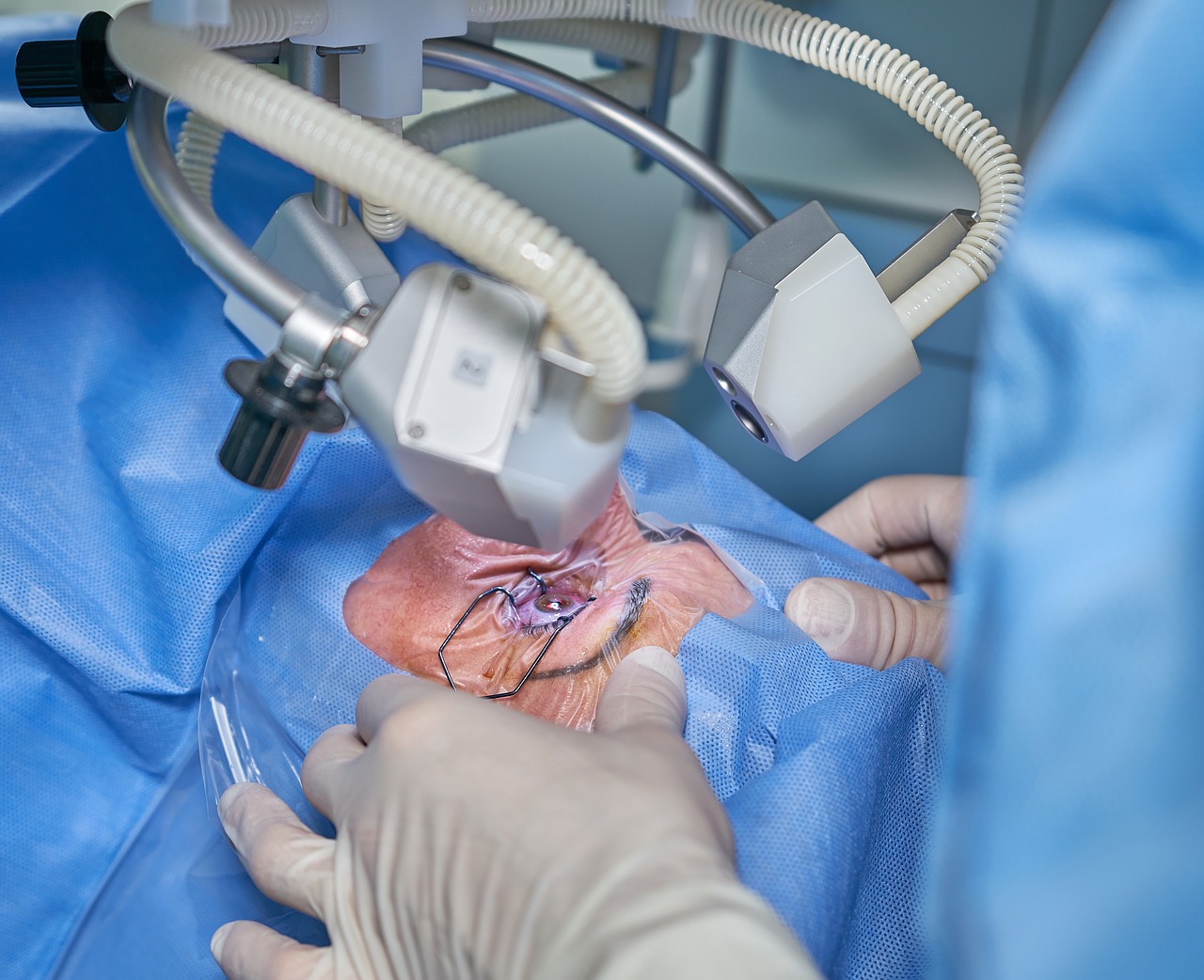FTC disclaimer: This post may contains affiliate links and we will be compensated if you click on a link and make a purchase.
Welcome to the world of understanding Cataracts and Blindness. Cataracts, a condition characterized by the clouding of the eye’s lens, is a leading cause of blindness, especially among the elderly.
In fact, by the age of 80, over half of all Americans are affected by this condition (source).
Cataracts obstruct the passage of light to the retina, resulting in blurred or dimmed vision. This is not merely an inconvenience, but a life-altering condition affecting millions globally.
It’s a silent thief of sight, progressing gradually and often unnoticed until it significantly interferes with everyday activities.
Our aim in this article is to shed light on the epidemiology and prevention of cataracts and blindness. We hope to arm you with accurate, up-to-date information, empowering you to take charge of your ocular health (source).
Epidemiology and Risk Factors
Age-related cataracts are a leading cause of blindness, not just in the United States, but throughout the world, and contribute significantly to the economic burden of eye-related healthcare. (source)
The number of cataract cases in the United States alone is projected to increase from 20 million in 2000 to 30 million in 2020. (source)
Global Prevalence
Research shows a high prevalence of cataracts in rural regions such as Indonesia and India, underlining the global challenge of this condition. (source)
In Western Pacific countries, the prevalence of cataracts increases with age, especially after age 60. (source)
Risk Factors
Several risk factors have been identified for the development of cataracts, including increasing age, sex, race, education, diabetes, weight change, refraction, smoking, and multivitamin use. (source)
Age is a significant risk factor for all types of cataracts and cataract surgery, even after adjusting for all major covariates. (source)
In conclusion, understanding the epidemiology of cataracts and identifying risk factors is crucial for planning and implementing effective prevention and treatment strategies.
The Progression of Cataracts and Vision Loss
Cataracts, often associated with aging, gradually develop over time, leading to significant vision loss if left untreated.
According to the Centers for Disease Control and Prevention, cataracts are the primary cause of vision loss in the U.S., affecting approximately 18% of Americans aged 40 and above.
The progression of cataracts is influenced by factors such as age, UV exposure, genetics, lifestyle choices, and certain medications.
Symptoms typically start with blurred or cloudy vision and can progress to difficulties seeing at night, light sensitivity, and double vision.
Untreated cataracts can lead to serious vision impairment, disrupting daily activities and potentially causing complete vision loss. Regular eye check-ups can help in early detection and treatment of cataracts, thereby preventing severe vision loss.
Modern surgical procedures for treating cataracts have proven effective, making it possible to preserve vision even in advanced cases. However, it’s crucial to be proactive about eye health to prevent cataracts from developing at this stage.
Importance of Early Detection and Prevention
Regular eye examinations play a crucial role in the early detection of cataracts, a prevalent condition that triggers clouding of the eye’s lens, leading to blurred vision and, if untreated, blindness.
Studies indicate that cataracts are a leading cause of blindness worldwide, emphasizing the importance of proactive eye health.
Various types of cataract surgery exist, each with its benefits. The most common involves replacing the clouded lens with an artificial one, dramatically improving vision and quality of life.
Maintaining eye health and safety is paramount in preventing cataracts and blindness. This includes regular eye exams capable of detecting not only cataracts but also other conditions such as glaucoma or macular degeneration.
Early detection can prevent or delay vision loss, preserve vision quality, and facilitate more effective treatment, ultimately saving on costly treatments or surgeries down the line.
Treatment Options and Reversal of Blindness
When it comes to cataract treatment, there are several routes you can take. Initial non-surgical methods aim to improve vision quality by implementing measures such as new eyeglasses, anti-glare sunglasses, and magnifying lenses.
In some cases, these remedies can significantly reduce symptoms like cloudy or blurry vision, light sensitivity, and poor night vision. (source)
If non-surgical measures prove insufficient, the next step is cataract surgery. This procedure involves removing the clouded lens and replacing it with an artificial one. It’s usually considered when cataracts progress to the point of interfering with daily activities.
Interestingly, cataract surgery has the potential to reverse blindness. With prompt treatment, many patients regain their vision post-surgery, making it a beacon of hope for those experiencing vision loss.
However, this largely depends on the individual’s overall eye health and the progression of the cataract.
Finally, it’s important to highlight that accessible treatment options exist for those with limited access to healthcare.
Organizations such as the Mayo Clinic provide resources and information to ensure everyone has a fighting chance against cataracts.
FAQs on Cataracts and Blindness
When it comes to cataracts and blindness, there are a number of frequently asked questions that demand clear and concise answers. Let’s dive into some of these.
- What is a cataract? A cataract is a clouding of the eye’s natural lens, which lies behind the iris and the pupil.
- Can cataracts cause blindness? Yes, untreated cataracts can lead to blindness. In fact, cataracts are the leading cause of blindness globally.
- Can cataracts be prevented? While there’s no certain way to prevent cataracts, wearing sunglasses and a hat with a brim to block ultraviolet sunlight may help to delay cataracts.
There are also several common misconceptions about cataracts and blindness. For instance, cataracts are not caused by overusing the eyes and they are not a film that covers the eye. They are actually a clouding of the eye’s natural lens.
For further information and support on cataracts and blindness, you can visit the Optometrists Network and Fort Worth Eye Associates.
Policies and Research on Cataracts and Blindness
Efforts to mitigate the impact of cataracts and vision loss are being fueled by policies and innovative research. Professional eye care organizations are at the forefront of this battle, advocating for accessible and adequate eye health resources.
Researchers are persistently exploring groundbreaking treatments for cataracts, including advanced laser-assisted cataract surgery and more effective eye drop medications. These developments have the potential to revolutionize the way cataracts are treated, reducing the risk of blindness.
Simultaneously, policy initiatives are striving to ensure everyone has access to regular eye exams and treatments, regardless of demographic and geographic hurdles.
These policies aim to build a strong vision health system that could significantly reduce the incidence of untreated cataracts, and, in turn, prevent avoidable blindness.
Collectively, the efforts of policymakers, researchers, and healthcare professionals create hope for a future with fewer cases of cataract-related vision loss.
Conclusion
In this discussion on cataracts and blindness, we’ve explored the key facets of this prevalent vision impairment.
As noted by the Worthen Center for Eye Care Research, cataracts are the leading cause of blindness worldwide, responsible for a staggering 50% of cases.
Understanding the epidemiology of cataracts illuminates the magnitude of this issue; it’s estimated that over half of all Americans will have cataracts by the time they reach 80.
Yet, despite its commonality, there’s currently no proven primary prevention or medical treatment beyond surgical removal.
The importance of recognizing and addressing this vision impairment cannot be overstated. As highlighted by Prevent Blindness, the lens of the eye becomes clouded, obstructing light from properly reaching the retina, leading to blurry or dim vision.
Given these facts, it’s crucial to prioritize eye health and seek timely treatment for cataracts. This can help prevent irreversible blindness, promoting a healthier and more vision-secure future for all.










